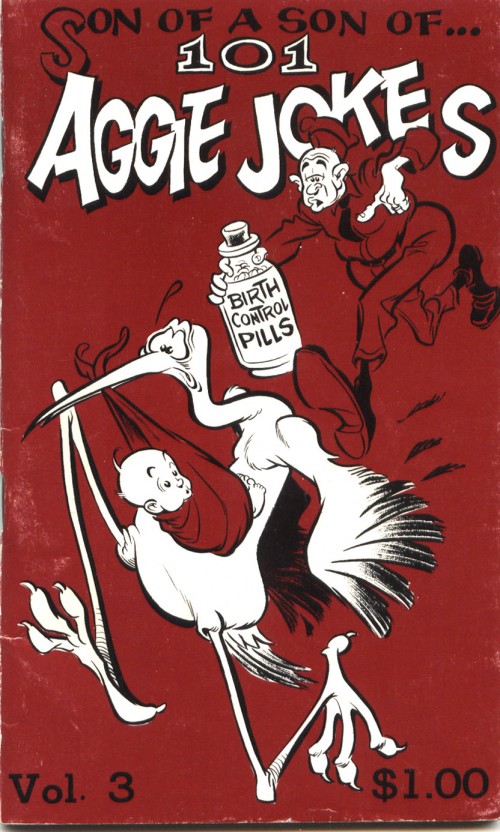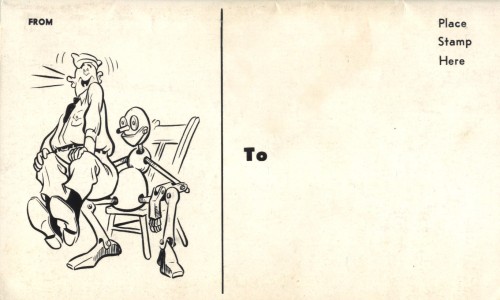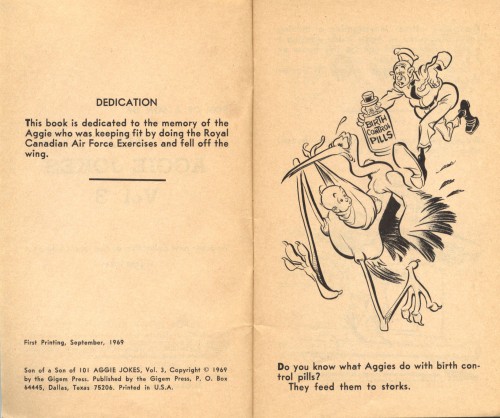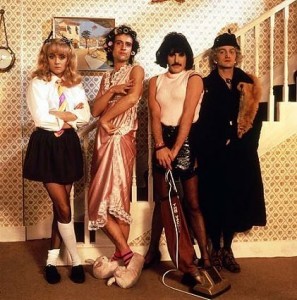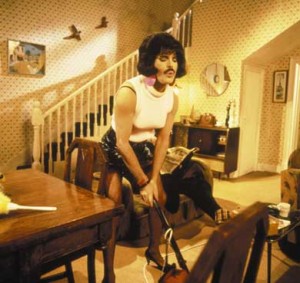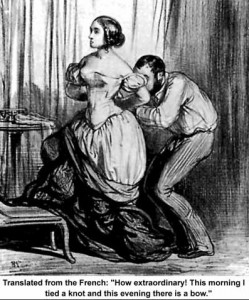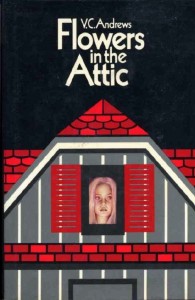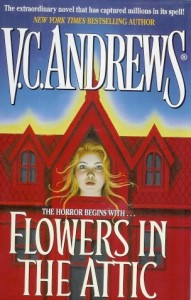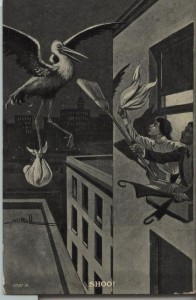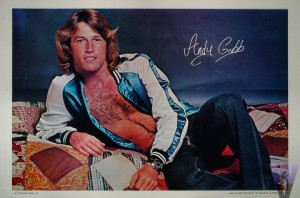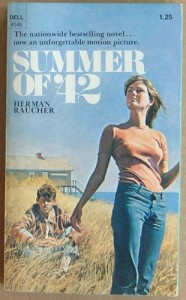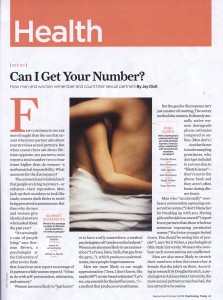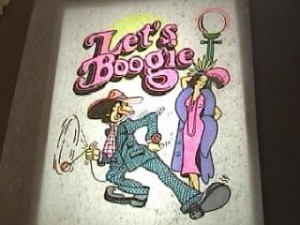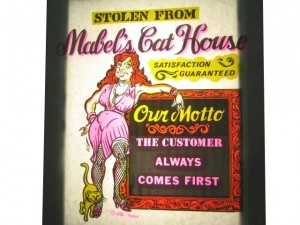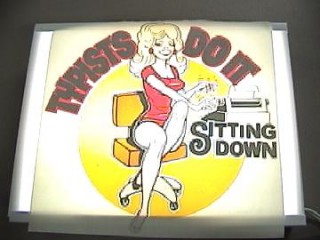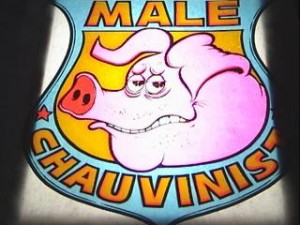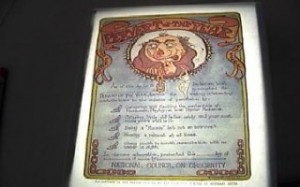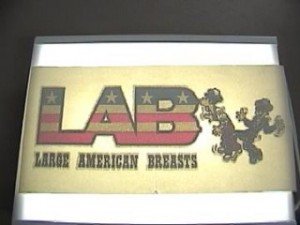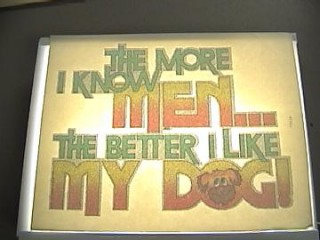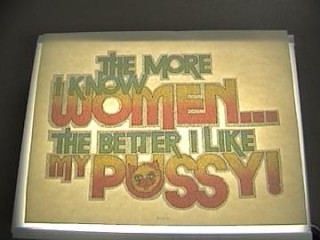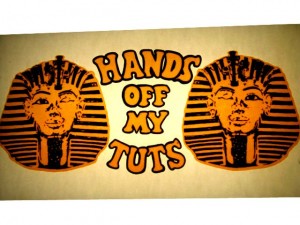I have a habit of making stories from nearly anything. I see a person on the street, I give him or her a name, an occupation, a mood, a spouse or other family member, and a mission. In line at the grocery story, I love to watch what people are buying. A lovely, or hysterical, little vignette emerges. (One time, it was a man at 12:30 at night purchasing a huge bottle of vodka, kitty litter, and a Cornish game hen. The vodka bottle was nearly the size of the kitty litter canister. I had to keep myself from advising him not to sit down with the bottle until after he fed the cat — even if the hen was for the cat, sooner or later, a hungry cat will eat a passed out human.) Anywhoooo…
Visiting estate sales allows me to see more than things to buy; I see a life. A few objects create a sketch, a few more inks it in, and then my mind paints in all the rest. I can’t help myself. And I believe it’s not just more exercises for my imagination; I learn a lot this way.
At a recent estate sale, I discovered the recently deceased woman had been a bookkeeper, extremely active at the nearby church, and an excellent bowler. But there was more. I was lucky enough to find (and purchase) a few raunchy old pulps and a paperback on open marriages — extra bonus material included a bookmark at the chapter on renewing the contract, and a few Polaroids of the woman in her 1950’s wearing office attire in pinup poses. In order to not let her sons (who were running this estate sale) learn things they may have lived this long without knowing, I bought a whole bunch of stuff so that they’d be too busy tallying my bill to really see my items and do the math on their mom’s life.
Working at another estate, where ‘Grannie’ was moving to an assisted care facility, there was a lot of clutter. For practical reasons, it seems. Hidden in plastic waste cans, desk drawers, floor cubby-holes, were half-full (or half-empty, for you pessimists) bottles of booze. Mostly cheap sherry & brandy. So cheap was this hooch, I’d imagine you couldn’t tell one ‘flavor’ from the other — or from rubbing alcohol for that matter. Now we knew more about where ‘Grannie’ was moving and why. We just disposed of the bottles as we found them, without a comment, so as not to embarrass the family. We also found an overwhelming number of unfinished sewing and needlework projects; idol hands really might be the devil’s workshop.
I have been to more estate sales than I can count where the now-deceased elderly woman had been to art class in her younger years. Yes, she studied figure drawing — nude figure drawing. If I am lucky, I get to buy the portfolio. Often, I am not so lucky; but I do get to at least leaf through them. I do think ladies today ought to be educated thus. It’s something we, as a culture, should not have stepped away from.
This all gets me to thinking… Upon my death, at my estate sale, people will draw conclusions about me. Folks may think I took a nude figure drawing class — at least until they read the various names and dates on the drawings. They might think I had an open marriage. Lots of folks will think, due to my huge collection of pinups and vintage erotica, that I was a lesbian; people do it now. Perhaps I should leave notes.
But women do leave notes. In fact, they document their whole lives. Especially those women who were wives and mothers. There’s a certain pattern to a mom’s life, and in these homes of women who have passed on, you see the evidence of it.
There are the piles of scrapbooks, letters, photos, and correspondence of intimate connections. The trail begins with cards, notes, and photos with written clues to romance. Perhaps there are diaries. Soon there are stacks of ‘baby books’, family photo albums, depositories of greeting cards, postcards, letters and other clues of a new family and social attachments. (As the family grows, whatever personal diaries there were may now cease; she is too busy caring for her family to document and journal her own life in a diary.)
As the children get older, these scrapbooks turn into group things. Work newsletters, bowling league gazettes, church group & luncheon publications… She continues her habits of saving and, if lucky, pasting. As the children age, she becomes an empty-nester, and the social group activities are intermittently interrupted with family wedding invitations, announcements of new born babies, thank-you-for-the-gift cards, and a few obituaries here and there. Some of the wealthier women traveled, and you’ll find volumes full of travel itineraries, plane & boat tickets, postcards, photographs and other travel souvenirs. But just as the books became less and less about family, so the books eventually become less and less about the living.
Too soon the scrapbooks become filled with page after page of obituaries, memorial service bulletins, the occasional thank you card from the younger generation for the flowers… Even if the obits are punctuated with the occasional wedding and birth announcement clippings, there are no cards, or handwritten notes, just newspaper clippings. Proof that human interaction is limited, the only handwriting now is the feathery-script of the woman making the book; a single script places the dates below the clippings. The scrapbook is a one-woman — one-way — endeavor. She continues to chronicle the past rather than the now. To fill her day as well as the books, she includes newspaper articles on ‘Remember When’ and ’50 Years Ago Today’ stories. These clippings dot the obits with more socially-sterile tanned documents of death and loss…
There you stand, holding these books, this evidence of life which was cut, pasted and collected by this woman who has passed on. In some cases, all you find are the drawers and boxes of intentions — loose papers that had patiently out-lasted their acidic attacks to survive the great “some day” when they would be placed into books to tell their stories; their brittleness a testimony to the bitterness of time that ran out.
Yet, when you bring the stacks of lovingly made books &/or old saved ephemera to the living, they say “Go ahead and sell it. Or pitch it if it’s not worth anything; I don’t want it.”
I cringe when they say that.
But I do as I am told, praying that someone will come along and adopt these books and boxes of ephemera, in some fashion adopting these women & their families — if they are willing to see the dead-paper forest for the trees of individual auction-priced items.
But sometimes, it’s what you don’t find which illuminates the most about lives.
Once I was working with my mom at an estate sale. We were clearing out the master bedroom when she opened the nightstand drawer and squealed so loud that I quickly turned from the closet to look. My mother stood clutching an item in her hand, her face was flushed and her eyes begged for help. “I shouldn’t have picked it up,” she said. I came over, removed the item from her hand, and discovering one of those small clothing shavers (the kind that you use to remove pills on your sweaters etc) I said “What’s the matter with a sweater shaver?” My mother sighed, her shoulders relaxed and she said “Oh, I thought it was a… well, you know…” My mother had thought it was a vibrator.
This, of all the finds over the years, has me thinking the most: Why haven’t I ever found vibrators at estate sales?
You might be quick to say that the families had already cleared the home of such things, out of a sense of propriety perhaps. But I’ve cleaned too many nightstands, bathrooms, closets, and under too many beds. I’ve found too many family skeletons, dark secrets, and old people diapers to believe this is the reason.
I’ve found all the ephemera documenting the most intimate parts of their lives, including their love lives. What’s more, I’ve found evidence of their sex lives — be it the old letters, pulp novels, erotic works, or ‘just’ their offspring. But never a sex toy.
I find it hard to believe that loneliness, drinking, sewing, bowling, church activities, and cut & pasting from the newspaper replaces the need for sexual gratification. It doesn’t work now, at the age of 45, so why would it be enough at 92?
Do families worry more about ridding mom or grandma’s home of her pocket rocket more than they do adult publications or evidence of other bodily functions? Could it be these women really have no sex drives? Or, even though vibes and sex toys have been around for ages, were these women unaware they existed — or without means to get themselves one? Or is there some other reason I do not find vibrators when preparing for estate sales?
